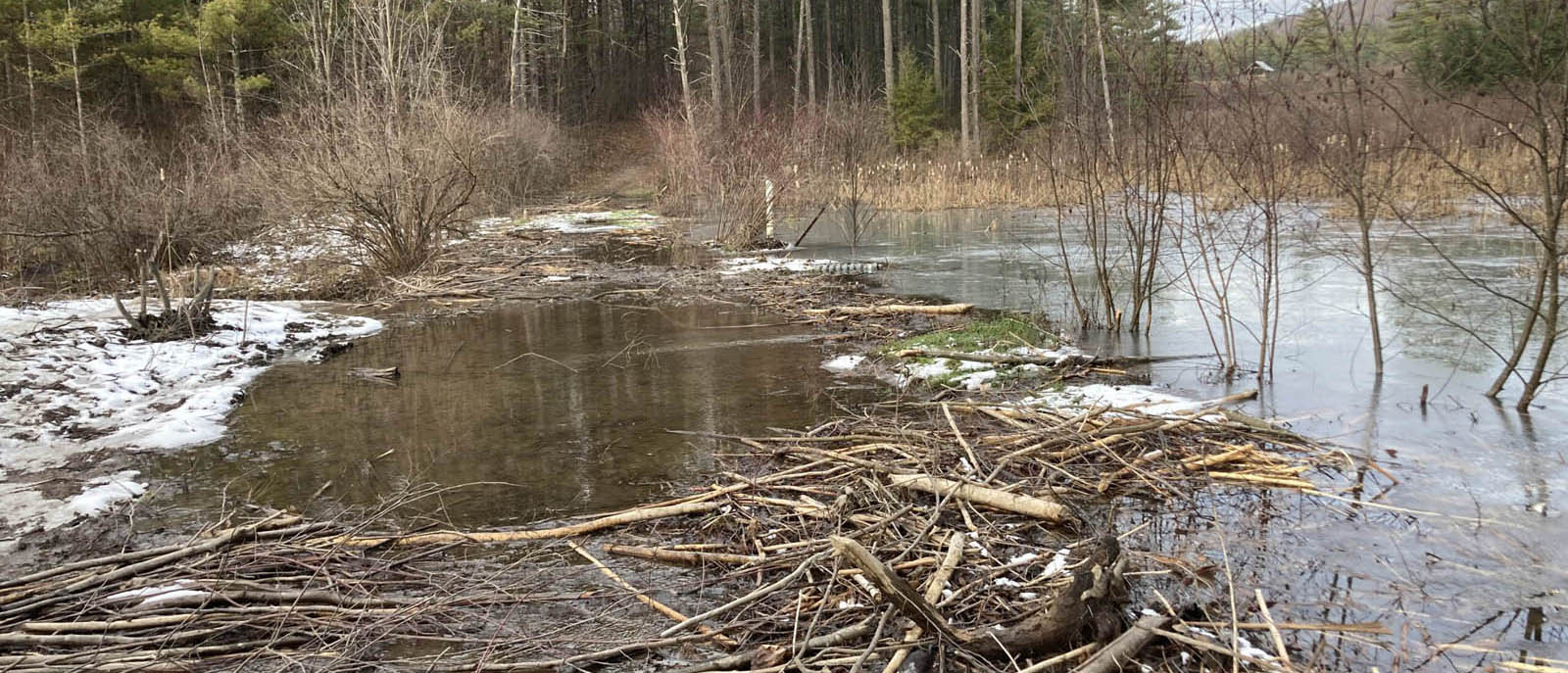
If you’ve walked the trails on the lands of The Watershed Center in the past several months, you know that the beavers who call that land home are doing what they do best—felling trees, building dams, creating ponds. During the summer, their efforts flooded the main trail into the land. Again.
For many years, TWC board members have waged a benevolent match of wills with the beavers to keep water moving through a culvert under the trail where it passes through the wetlands. A beaver baffle kept the culvert clear for long stretches of time, but eventually the beavers would figure out how to plug it. Because that’s what beavers do—that’s what they need to do. They slow the flow of water to create and expand pools where their big, bulky bodies can move with ease and grace to reach the alders, willows, birches, and maples that are their food and shelter and dam-building material—their everything. So the trail would flood. Someone would clear the baffle and the water would flow through the culvert again, and the beavers would continue chewing and peeling and arranging sticks to slow the flow. And so it went.

When the trail started flooding again this past summer, we started getting calls at the Vermont Family Forests office from community members who loved walking the trail and wanted to let us know about the flooding so it could be fixed. One caller offered to help install a better baffle. All great inputs.

But the fact is, that trail—laid down through the heart of a wetland a long time ago—is in the wrong place. Instead of repairing it once more, and again thwarting the beavers’ efforts, could we reimagine it in a way that works for both people and beavers? This fall, VFF’s Executive Director David Brynn and VFF’s Conservation Mapping Specialist Callie Brynn set about doing just that.
In their free time, over the course of several weekends in November and December, David and Callie—with help from Cam Barrows and John Peters—cleared a new section of trail. Beginning at the information kiosk on the main trail, the new route follows the toe of beautiful quartzite ledges just east of the wetlands, meandering through eastern hemlocks and northern white cedars to the earthen dam at Norton Brook Reservoir. From there, hikers can cross the dam and rejoin the main trail.
David and Callie cut four northern white cedars near the path to bridge a small stream. They named the new trail section “The Commoner’s Return.” Their volunteer project was a true act of commoning—stepping up to care for the water and wildlife in our home place, maximizing local labor and materials and minimizing capital.



They’ll likely do more tinkering, to make sure the path avoids areas too wet to hold up to foot traffic, but the trail is open and fully functioning, so check it out. Before or after you do, be sure to walk along the old section of main trail to where it drops into the wetland. There, you’ll see the beavers’ work in full swing—freshly peeled sticks crisscrossing the submerged trail, fresh-chewed stumps of alder stubbling the expanded pool of water. Stay a while and savor the abundant, diverse, beautiful, beaver-made wetland habitat that supports so many plant and wildlife species.
Thank you beavers. It’s a joy to co-thrive with you.







